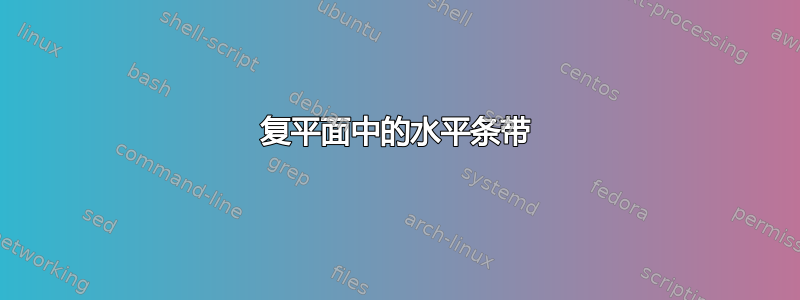
答案1
只是为了好玩。请参阅代码中的注释,了解每个函数的作用。
\documentclass[border=5mm]{standalone}
\usepackage{tikz}
\usetikzlibrary{decorations.pathmorphing,decorations.markings}
\begin{document}
\begin{tikzpicture}[ % define some styles for use later
% for the "axis", i.e. the dashed arrows passing through the center. Here "latex" is the name of an arrow tip
myaxis/.style={densely dashed,-latex},
% for adding arrow tips in a line, uses the decorations.markings library
arrow in line/.style={
decoration={
markings,
% the position can be a fraction of the length of the path
% the #1 indicates that the style needs an argument, e.g.
% arrow in line={0.5}
% which places an arrow tip halfway along the line
mark=at position #1 with \arrow{latex}
},
postaction={decorate}},
% node styles for the two black dots
dot/.style={circle,fill,inner sep=1pt}
]
% radius of the arc in the top line, saved for convenience
\newcommand\circleradius{6mm}
% define coordinates for the four corners of the filled area
\coordinate (A) at (-4,1);
\coordinate (B) at (4,1);
\coordinate (C) at (4,-1);
\coordinate (D) at (-4,-1);
% fill and draw with the given colors
\filldraw[
draw=black,fill=black!20,
% the random steps decoration is from the decorations.pathmorphing library
decoration={random steps,segment length=2mm,}
]
(A) -- (B)
% add decoration on subpath from B to C
decorate {-- (C)} -- (D)
% and ditto for D to A
decorate {-- (A)};
% draw the axes
\draw [myaxis] (0,-1.8) -- (0,1.8);
\draw [myaxis] (-4.5,0) -- (4.5,0)
% pos=0.85 means that this node is added 85% along the way of the line
node[pos=0.85,above] {$\mathrm{St}_{a}$};
% draw line below filled area
\draw [arrow in line={0.4}]
%starts at the point that is 0.5 to the right and 0.4 below D
([shift={(0.5,-0.4)}]D) -- ([shift={(-0.5,-0.4)}]C);
% draw line above
\draw [arrow in line={0.7}] ([shift={(-0.5,0.4)}]B) --
% the ++ indicates that the coordinate is relative to the previous coordinate
++(-1.5,0) coordinate (m) % add a coordinate here for later reference
% draw a circular arc from this point
arc[start angle=0,end angle=180,radius=\circleradius]
% draw straight line to the end point
-- ([shift={(0.5,0.4)}]A)
node[pos=0.8,above] {$\Gamma_{e,\lambda}$};
% draw the dot in the center of the half circle
\node [dot,label={[label distance=0pt,inner sep=1pt]below right:$\lambda$}] (c) at ([xshift=-\circleradius]m){};
% draw radius
\draw [densely dotted] (c.center) -- ++(150:\circleradius) node[above right,midway,inner sep=0pt] {$\varepsilon$};
% draw dot inside filled area
\node [dot,label={[label distance=0pt,inner sep=1pt]right:$z$}] (c) at (-0.7,0.7){};
\end{tikzpicture}
\end{document}




